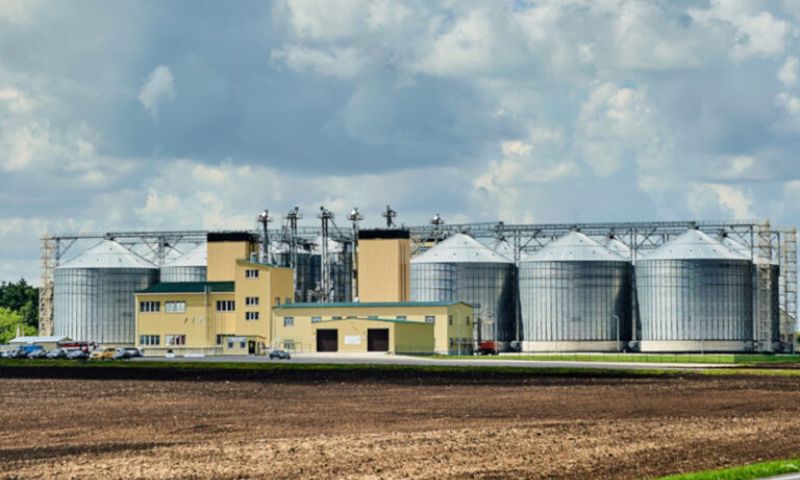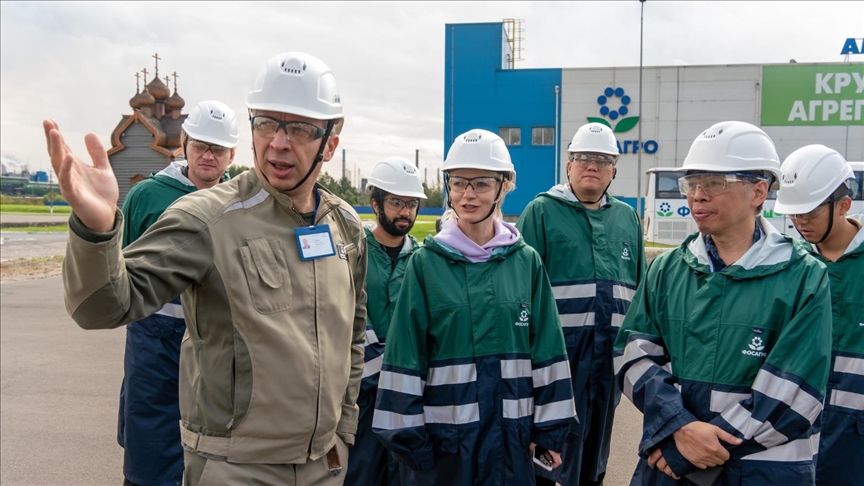MOSCOW: As the world grapples with feeding an ever-growing population, Russia stands out as the world’s leading exporter of fertilizers, exporting a staggering $18.7 billion in 2022 alone.
In 2022, Russia exported $18.7 billion worth of fertilizers, making it the top exporter globally, with major recipients including Brazil ($5.31 billion), India ($2.73 billion), the US ($1.95 billion), China ($910 million), and Indonesia ($699 million). Exports to India surged more than six-fold between 2021 and 2022, and this year, Russia has increased its fertilizer output by 13%, according to TASS.
Vladimir Karpov, head of PhosAgro’s production service, explained to Anadolu that Russian fertilizers are derived from apatite-nepheline ore, mined from the Khibiny Mountains on the Kola Peninsula near Finland. This volcanic rock is rich in phosphorus and free of harmful impurities, ensuring high-quality and environmentally friendly fertilizers.

“At a specialized factory, we separate the ore into apatite and nepheline concentrates,” Karpov noted. “The apatite concentrate is then processed further, interacting with other ingredients to create various phosphorus fertilizers.”
PhosAgro operates three production sites in Russia: Cherepovets, Volkhov, and Balakovo, each with unique capabilities.
“Cherepovets produces 52 brands of fertilizers, including liquid varieties that can be applied directly to soil. Volkhov offers phosphorus, potassium, and sodium-based fertilizers, while Balakovo specializes in fertilizers and animal feed additives,” Karpov added.
Russia’s Path to Fertilizer Production Leadership
Svetlana Zlobina, head of PhosAgro’s Green Planet educational center, highlighted the history of Russia’s fertilizer industry, which began in the 19th century with the insights of German scientist Justus von Liebig at the first agricultural school in Cherepovets.
“Agronomists not only discussed the benefits of fertilizers; they demonstrated them in practice. They divided experimental fields into sections and applied different fertilizers to each, leaving one as a control. The best yields came from plots treated with complex fertilizers containing nitrogen, phosphorus, and potassium,” Zlobina explained.

The industry expanded significantly after the Russian Revolution of 1917 and World War II, with major facilities established, including the Cherepovets nitrogen plant in 1969 and the Ammophos Plant in 1974.
The Cherepovets Complex PhosAgro, a successor to these plants, has become a leading producer of fertilizers globally. “Cherepovets was selected for its strong transport infrastructure, skilled workforce, and access to coke and chemical production from the local metallurgical industry, which is vital for ammonia production,” Zlobina said. She noted that the facility initially produced ammonia and ammonium nitrate, later expanding to phosphorus fertilizers.
Current Production and Global Reach
In 2023, Russia produced nearly 60 million tons of fertilizers, with PhosAgro contributing 11 million tons. The company’s products are exported to 100 countries, although the Russian market remains its primary focus.
“Fertilizer production is a responsible business. It’s essential to benefit humanity while adhering to the highest humanitarian standards,” Zlobina emphasized.

Despite the complex and potentially hazardous nature of fertilizer production—using substances like sulfuric, phosphoric, and nitric acids—the final products are crucial.
“Fertilizer production exemplifies the positive impact of chemistry on humanity, as these essential inputs enhance agricultural productivity,” she concluded.

